This Is NOT An Artifact
Posted in: UncategorizedThis Is NOT An Artifact catalogs 15 years of investigation by the Center for PostNatural History. Featuring essays and photography by founder Rich Pell, and a catalog of PostNatural organisms featuring contributions by Center for Genomic Gastronomy, Terike Haapoja & Laura Gustafsson, Steve Rowell, Nicholas Daly, Ian Nagoski, Roderick Williams and Oron Catts & Ionat Zurr. Includes 3D glasses.
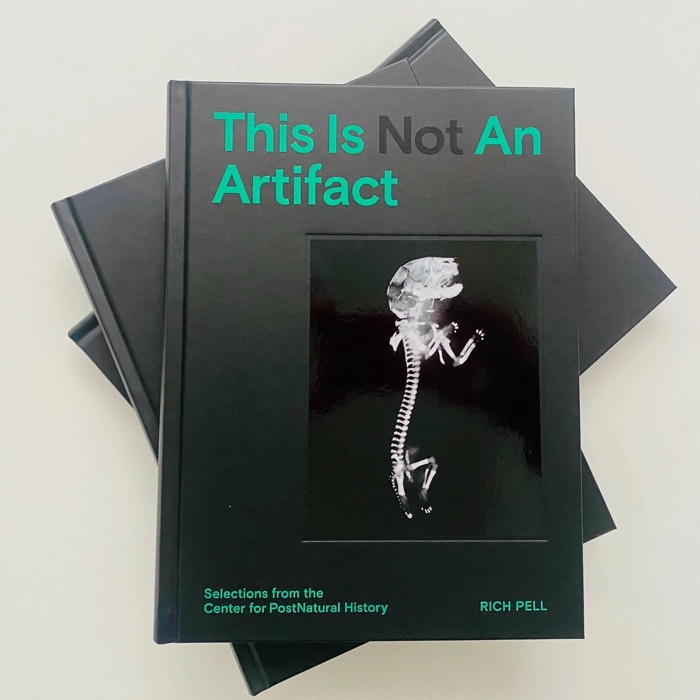
The Museum of PostNatural History in Pittsburgh is the world’s only museum dedicated to all the organisms that have been deliberately modified by humans. It informs visitors about the bacteria, animals, plants and other life forms that are all too often denied a place in Natural History Museums and zoos. As diverse as the rio red grapefruit, the turnspit dog, the bh5n1 bird flu vaccine egg, the glowing bunnies or the seedless watermelon, these organisms have one thing in common: they have been deliberately and heritably transformed by humans.
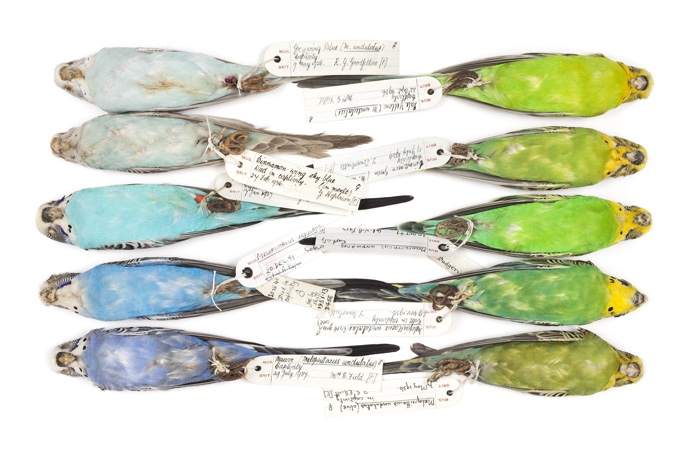
Budgie specimens illustrating colour variations (c) Trustees of the Natural History Museum
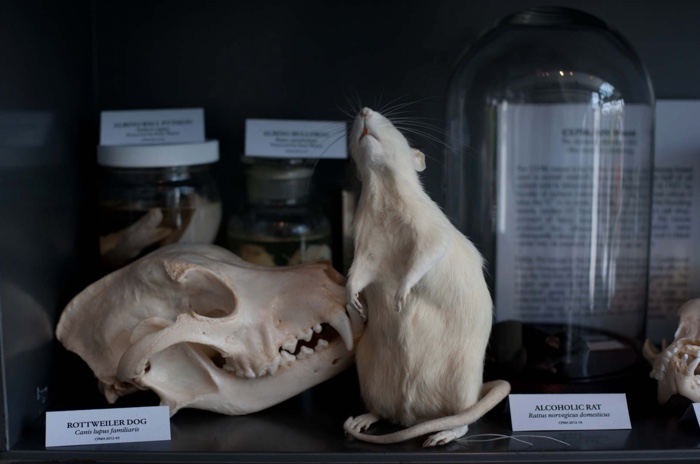
The Center for PostNatural History. Photo: Stephanie Strasburg
The book, devised as a compact version of the museum, investigates a key question: “What do living artifacts tell us about the cultures who create them?”
One clear answer is that these genetically modified organisms invite us to look at life through a deliberately anthropocentric lens. Even though humans are far from being the only factor that influences evolution, the long history of domestication and selective breeding as well as the practices of genetic engineering and synthetic biology have shaped a world where most non-human mammals are the ones favoured by humans. When measured by biomass, the book explains, only 4% of mammals on Earth are wild, 60% are domesticated and the rest are us. Our impact on who and what gets to live is such that some plants and animals can no longer reproduce without our help, that some mammals require human assistance to give birth and that others that we love dearly are suffering because of our preferences for specific traits.
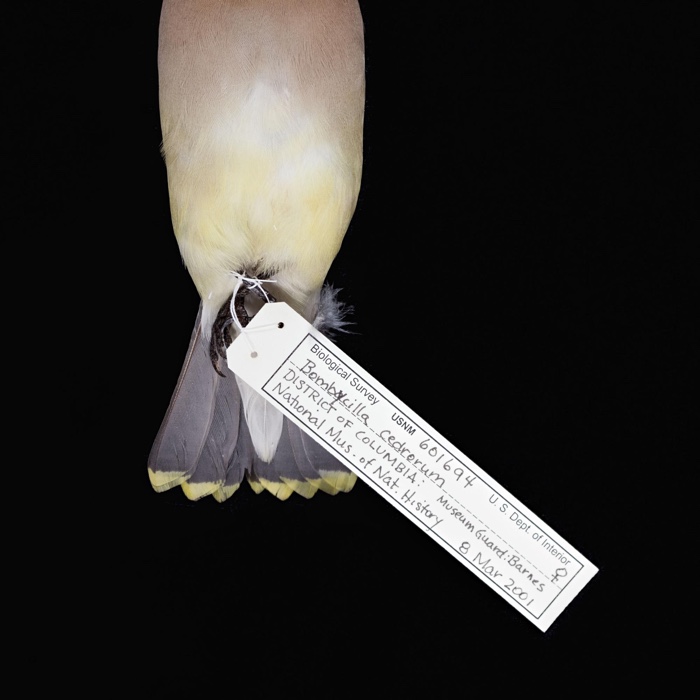
Richard Pell. From the series Collected from Within, 2012
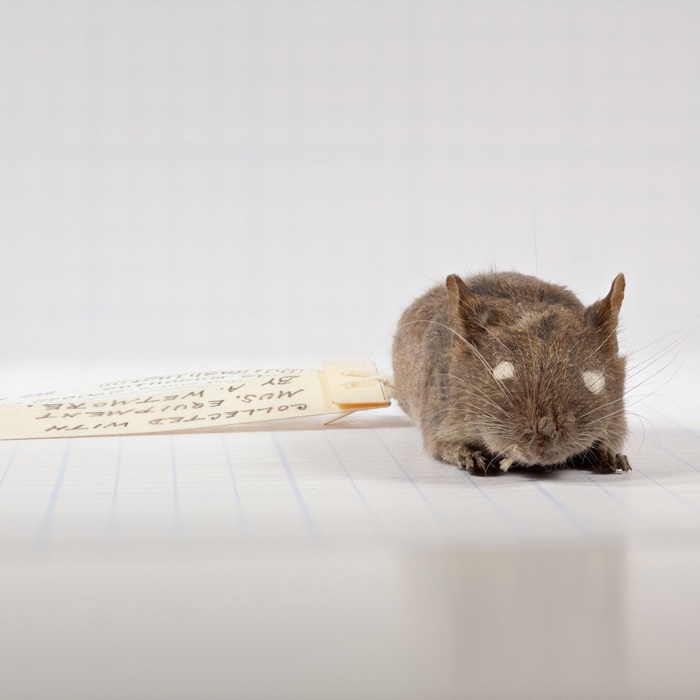
Richard Pell. From the series Collected from Within, 2012
I ordered the book on Kickstarter a couple of years ago, i frantically opened all the email updates that Rich Pell sent us and almost lost hope of ever seeing a printed version. One day, the book finally landed on my doorstep. It is as fun, intelligent and stimulating as I could hope. It’s packed with photos and anecdotes about
fancy rats beloved by Victorian era women, the horrific distribution of smallpox blankets to American natives, Birmingham roller pigeons, pregnancy test frogs and the Q fever biological weapon. It tells the stories of organisms that underwent genetic manipulation such as the ribless mouse embryo created to study the function of genes that control the development of body patterning in vertebrae, the infertile male screwworms engineered to eradicate other screwworms feeding on living cows, the blight-resistant American Chestnut Tree and goats that produce spider silk in their milk. It makes you wonder about the soundness of giving birth to a “de-extinct” Woolly Mammoth that will not really be a Woolly Mammoth. Or the ethics of creating the first potentially viable human/monkey chimeric embryos that might, one day, enable us to grow non-rejectable organs and tissues for humans.
Just like the museum itself, the book offers the public information and space to form their own opinion about the ethics and politics of manipulating the fabric of life. It raises many ethical questions and gives us some of the tools and data to draw our own conclusions.
Get it here for the Summer or for your sister.
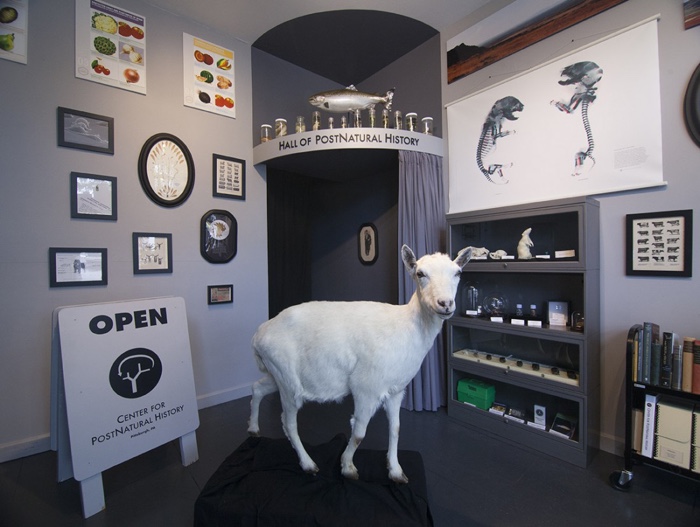
The Center for PostNatural History. Photo: the Center for PostNatural History
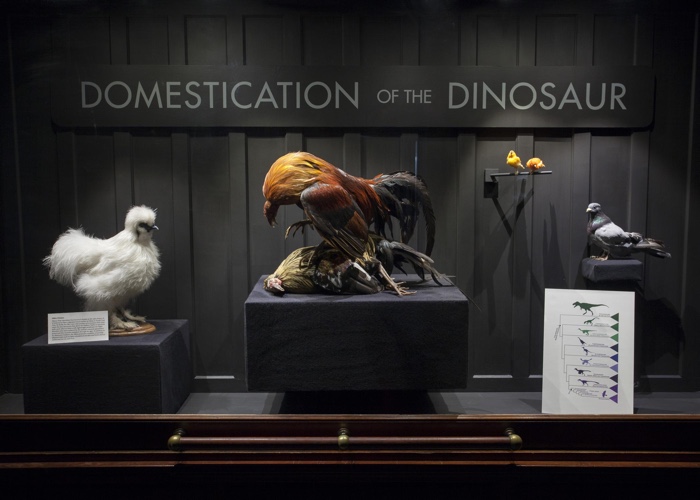
The Center for PostNatural History, Domestication of the Dinosaur, 2013
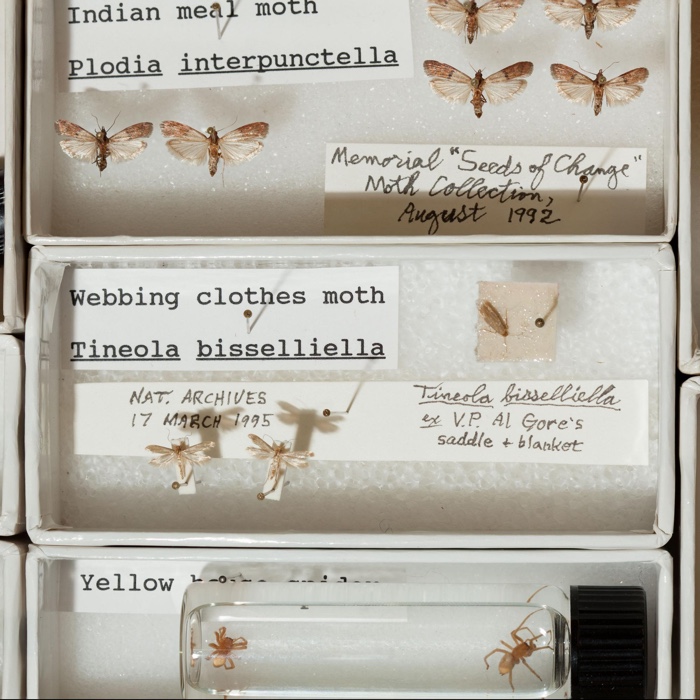
Richard Pell. From the series Collected from Within, 2012
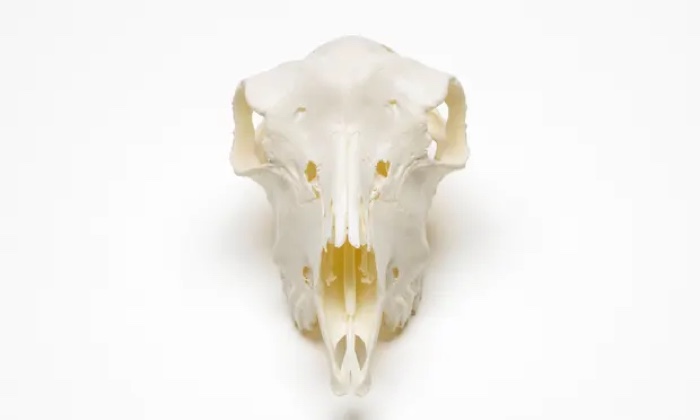
The skull of a genetically modified goat. Photograph: Wellcome Images/Wellcome Collection
Related stories: The Christmas tree, your typical postnatural organism, Interview with Richard Pell, Director of the Center for PostNatural History, Cobalt 60 Sauce, a barbecue sauce made from ‘supermarket mutants’, When forbidden flowers escape from the lab, The seratonin knock-out rat, Bioartefactos. Between transgenic crops and ancestral biodiversity, Proceed at Your Own Risk. Tales of dystopian food & health industries, Vegetation as a Political Agent, Alter Nature: We Can, etc.

Post a Comment